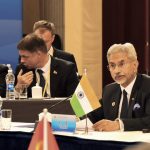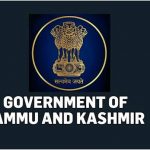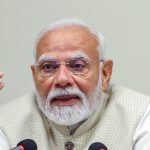COLONEL SATISH SINGH LALOTRA & SONAL DOGRA
The quote above by our Ex president late Dr. Savepalli Radhakrishnan summarizes everything what a modern education learning system ought to be for a society and a nation at large. It should open up new vistas of learning and foreclose any outdated methods of advance in learning process. Since the world is constantly on the move, with changing dynamics the main vehicle for change i.e. the education system too ought to be changing as well keeping in tune with the requirements of modernity imposed on this society. Very well aware of the fact that the above education policy has been crafted after decades of toil and scrutiny under the prying eyes of renowned educationists of the country, nevertheless it stands to logic that the end users’s (students, teaching fraternity) views too be taken into account.
The aim of writing this article is to evaluate the key principles of NEP 2020 in a very cut and dried format for the purpose of realigning its core concepts with that of societal norms which are changing fast much to the chagrin of keepers of scholastic propriety. We have endeavored to be very concise and pointed in this write-up to cater to the entire fraternity of the school and society at large. Education is one of the fundamental building blocks on which rests the human development and its advancement. The global education development agenda reflected in the Goal 4(SDG4) of the agenda for sustainable development adopted by India in 2015 seeks to ensure inclusion and equitable quality education and promote lifelong learning opportunities for all.
Such a lifelong goal will require that the entire education system be reconfigured to support and foster learning in a new format so that all critical targets and goals (SDGs) of the 2030 agenda for sustainable development can be achieved. The NEP 2020 is the first education policy of the 21st century and aims to address the many growing and developmental expectations of our country. The unfinished agenda of the national education policy of 1986 modified in 1992(NPE1986/92) has been covered in this NEP-2020.
The key principles on which this NEP 2020 rests are :
- Recognizing, identification and fostering the unique capabilities of each student by sensitizing the teachers, parents etc.
- According the highest priority to achieving foundational literacy and numeracy by all students by grade 3.
- Flexibility, so that learners have the ability to choose their learning trajectories and programmes and hence progress accordingly in life.
- No hard separation between arts and science stream, between curricular and extracurricular activities, between vocational and academic learning .
- Multi-disciplinary and conceptual learning rather than rote learning /learning for exams.
- Creativity and critical thinking values like empathy, respect for each other courtesy etc.
- Promoting multilinguism and power of language in teaching.
- Promoting life skills to include communications, cooperation, teamwork etc.
- Focusing on formative assessment rather than summative assessment that encourages today’s “coaching culture’.
- Extensive use of technology in teaching and learning, removing language barriers increasing access for “Divyang” students, educational planning etc.
- Light but tight regulatory framework to ensure integrity, transparency and resource efficiency of the educational system through audit and public disclosure while encouraging innovation and out of the box ideas through autonomy, good governance and empowerment.
- A rootedness and pride in India, its rich and diverse, ancient and modern culture, knowledge systems etc.
- Education is a public service and hence quality education should be accessible to one and all.
As mentioned in previous paragraphs, since the primary aim of writing this article is to find a co-relation of core principles of NEP-2020 with the demands of ever changing scholastic environment in our country; hence the 13 odd key principles have been the bedrock of our write up as such though not all may fall under the dubious distinction of failing to provide more clarity. The first and foremost principle of this education policy lays stress on identification and fostering of unique capabilities of students by sensitizing the parents and teachers. The principle though lofty in its being, leaves much to be desired.
Where is the student in this whole equation, on which depends the resolution of this equation? Has any road map been provided or been entrusted to the teachers as a guiding light to refer to harness the unique capabilities of a student? Or is it left to the ingenuity and experience of a teacher to harness the same? If it is later then each teacher with different background, temperament and bent of mind will find the capabilities of a particular student as per his /her choice. What and how much is the interaction level of the teachers with the parents except for the routine PTM meetings so as to implement this principle in totality? All these issues give rise to a level of subjectivity in evaluation.
Do the upwardly mobile parents have that much time to spare for the interaction with the concerned teachers? With the student –teacher ratio one of the worst in the world, is the NEP -2020 sanguine about the applicability of this principle minus the points mentioned above? The principle emphasizing on FLN (Foundational literacy and numeracy) basically rests on visual contact, being consistent and also aware of how to present or describe a risk. Are the teachers entrusted with implementing the FLN concept themselves adept in these tasks? The concept further rests on 3 pillars of orality, orthographic expertise and exposure to a variety of texts. Do the mufassil schools of the country have the wherewithal to implement these FLN concepts in totality, with maximum number of school children affected in this age group dropping out of schools under home constraints?
The concept of ingraining flexibility in the children to opt for the best course suited for their learning trajectories and programs is very much fraught with abstractions. At what stage is this principle of flexibility implemented upon the students? Are the students wise enough to choose the learning trajectories on their own, the education policy is silent on this issue.Further the principle emphasizing no further distinction between science and arts streams, vocational and academic learning, and curricular as well as extracurricular activities sound like a pipe dream for the teaching staff at the schools. How does the NEP-2020 implement this abstract principle at ground level? Has any road map been given by the NCF(National curriculum framework) for this implementation?
As if the above mentioned points are not enough to stir the minds of educationists of the country, the principle emphasizing on the need for multidisciplinary and conceptual learning instead of rote learning has to be developed in a much more robust manner both for the teaching staff and the learners. The unhealthy environment in the schools laying stress on achieving maximum percentage in the exams stymies this principle in its bud. The learner i.e. the student willy-nilly follows the rote learning because that is what helps him achieve maximum marks in the qualifying exams. Hence the need to unhinge the two facets of rote learning and achieving marks in the exams. Creativity and critical thinking values like activities to include empathy and respect for each other, selfless service are derivatives of home environment and not under the exclusive domain of the schools. How can a school improve upon a student who has been hardened by the life’s experiences?
NEP-2020 emphasizes light but tight regulatory framework for greater transparency, resource efficiency and integrity through good governance &audit in school education system, sounding all honky dory. But who will form the regulatory authority, good governance and resource efficiency in the schools which are marred by an increasing absenteeism of teachers and allied staff? There is a deafening silence on this issue by the education policy of 2020 that needs urgent clarity. The policy is maintaining a studied silence on issues like teacher’s holistic training and harmonizing his/her abilities with the demands of an increasing cut throat competition in the world dominated by attainment of marks by the students.
Since the education policy lays stress on the facet of education being a public service with everybody having access to quality education, have the planners of the country ever cast an eye on the amount of money being spent on one of the key indicators of human development index in India? It is a meager 2.8% of the country’s GDP with the required percentage to be upped to a minimum of 6% of the GDP to be of some material value. Have we measured up to the required standards? If we are falling short then why not legislate at the highest body of the country’s legislature, increase the spending on education and then enact the NEP-2020? Why put cart before the horse?
All in all the principles of NEP 2020 have been a much belated welcome step in the right direction for the betterment of student –teacher duo fraternity in the country. As brought in the beginning of this write up, the education policy suiting a country’s needs is the main building block of that country /society. With Himachal Pradesh having already implemented the NEP 2020 stage is already set for the rest of India to follow suit. AS is a well known fact “Battle of Waterloo was won on the playfields of Eton”. Thus implying that the Duke of Wellington who was commander in chief of British and allied armies in the battle of waterloo was a graduate of Eton college thereby emphasizing the role of education in shaping the destiny of a nation and an individual as such.
(The write up is a joint effort between a retired army officer and an educationist)








